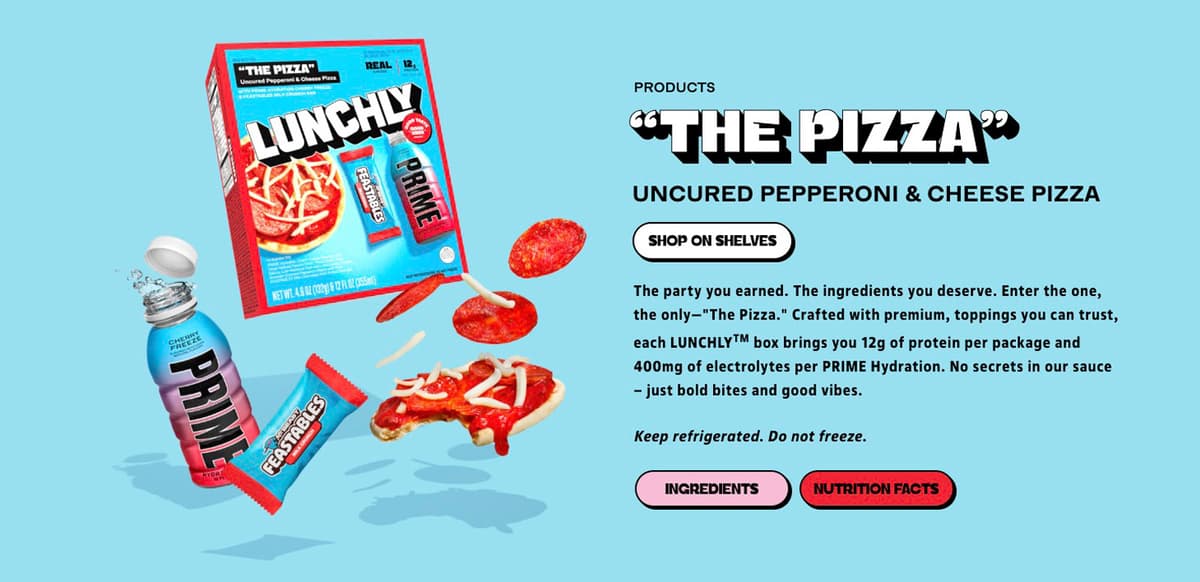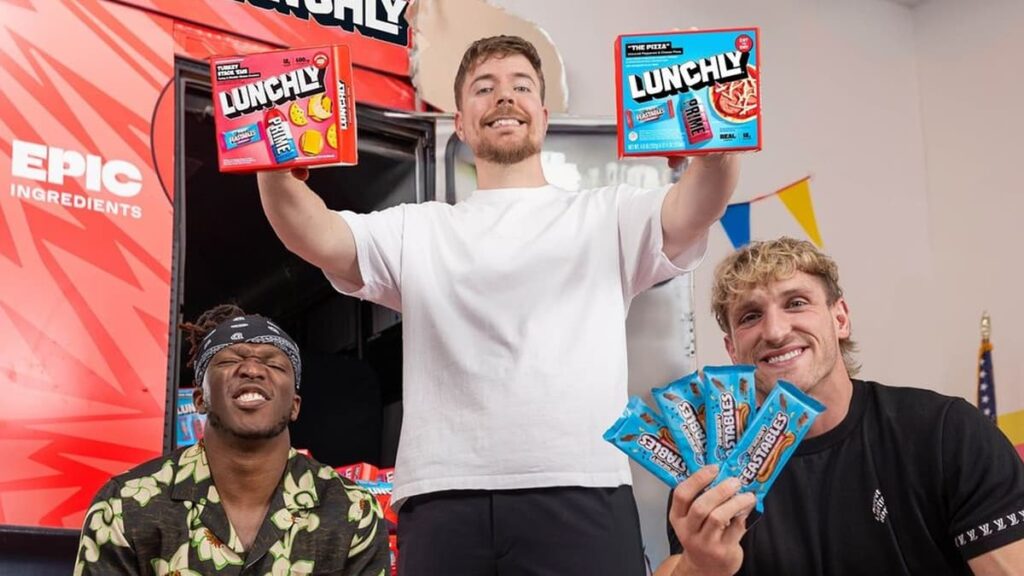We spoke with Registered Dieticians Destini Moody and Courtney Pelitera, who say parents “shouldn’t trust” Lunchly with their children’s nutrition as the influencer-backed lunch kit faces criticism online.
In September 2024, YouTube stars Logan Paul, KSI, and MrBeast joined forces to create Lunchly, a direct competitor to Lunchables that features Feastables chocolate bars and bottles of Prime Hydration.
The product came under fire almost instantly, with fellow creators like DanDTM slamming the influencer trio for “selling crap to kids who don’t know better than to trust the people who are selling it to them.”
While Logan, KSI, and MrBeast have each defended Lunchly against naysayers, their lunch kit — much like Prime Hydration — has become a subject of scrutiny as health experts weigh in with their expert opinions on the brand’s nutritional value.
Names like Doctor Mike, a YouTuber and board-certified family medicine physician, pointed out that one Lunchly package only contains about one-third of the USDA recommended calories for a child’s lunch meal… but eating three packs would put them well over the recommended amount of sodium.
We decided to get to the bottom of the matter ourselves, speaking with registered dietician Destini Moody of Top Nutrition Coaching to learn whether or not Lunchly is actually as healthy as it claims.
“In today’s day and age, it unfortunately needs to be said that we shouldn’t be trusting social media influencers with our children’s health during a critical period of their growth and development,” Moody began.
“MrBeast, KSI, and Logan Paul are acutely aware of the massive influence they have over young people on social media and are now angling to use this influence to circumvent their responsibility to build the quality product they claim to promote.”
Moody went on to slam the YouTubers’ “heinous marketing tactic” in labeling Lunchly’s sodium and potassium content as “electrolytes,” calling it a “deliberate attempt at using consumers’ generally positive association of the word ‘electrolyte’ with health to justify the high sodium content.”
“It doesn’t make much sense that children should be encouraged to consume electrolytes anyway as they aren’t professional athletes, and even most children that do participate in sports do not perform them to the intensity that they need electrolytes from sports drinks or any other source,” she added.
Moody went on to point out that sodium and saturated fats are left out of Lunchly’s online marketing materials — something she claims the influencers’ likely chose to do for a specific reason.
“This is probably due to the fact that the saturated fat and sodium content of Lunchables and Lunchly are so similar,” she explained. “Our influencer trio knew it wouldn’t look as great for them to include this data in their marketing.
“In fact, the USDA guidelines recommend that a single lunch meal not contain more than 10% of calories from saturated fat and every one of Lunchly’s offerings includes 25% to 35% of calories from saturated fat.”
However, Moody did give Lunchly credit where credit is due, applauding the product for containing real cheese as opposed to Lunchables’ “cheese products.” However, Lunchly itself still has ultra-processed products and boasts no whole grains — which the USDA recommends should be 50% of a healthy meal.
“As a dietitian, if these influencers were truly on a mission to make a better-for-you lunch kit option than Lunchables, formulating a product to fit the USDA guidelines for children should have been the starting point at the bare minimum.”
 Lunchly
LunchlyTo Moody, it seems like the YouTubers decided against using their influence to create a healthy product that meets the USDA’s guidelines, but instead,” Logan Paul included his own energy drink and MrBeast his very own candy bar into some meal kits, sprinkled them with some real cheese and called it a day.”
Courtney Pelitera had a similar take to Moody’s, saying she doesn’t consider Lunchly nor Lunchables “a complete lunch for a child or an adult.”
“With only 1g of fiber in these packaged lunches and a little bit low in calories to cover for a full meal, I would recommend adding a side of fruit or vegetables (ideally both) and another healthy snack of your choosing,” she told us.
To sum it all up, Moody used Logan Paul’s own words to explain why parents “shouldn’t trust their children’s nutrition by buying into Lunchly.”
“Yes, we could have made a lunch meal with carrots, celery, and apple slices, but I don’t eat that sh*t,” says Logan. “ I wouldn’t sell something that I don’t eat myself, and I wouldn’t find myself eating a carrot, celery, and apple slice lunch.”
“Logan Paul should realize that he’s not making food for himself, but for children that look up to him and follow his influence so closely, he should be using it ethically,” Moody concluded.
“Children should be encouraged to eat ‘sh*t’ like apple slices and celery. In my opinion, using this trio’s social media influence to market Lunchly as a healthier alternative to Lunchables is problematic as any nutrition professional can see that neither is a healthy option, but only one brand loudly claims to be.”
Dexerto reached out to Lunchly for comment, but received to response prior to the publication of this article.

